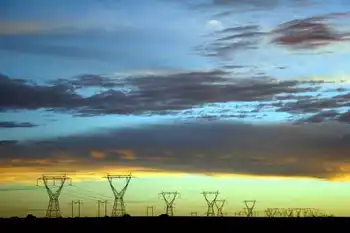Calpine's Dighton Power Plant Awarded Highest OSHA Safety Recognition
Star certification under the VPP program is OSHA's highest level of recognition of outstanding efforts by an employer and its employees to achieve exemplary occupational safety and health at their worksites.
"Dighton is now the third plant in Calpine's fleet to achieve OSHA Star status," said Calpine Dighton Plant Manager Michael Joyce. "This achievement reflects a great deal of hard work by our local personnel as well as a strong commitment to safety at every level of the Corporation."
OSHA's Voluntary Protection Programs (VPPs) are designed to promote effective worksite-based safety and health. Under the VPP, management, labor, and OSHA establish cooperative relationships at workplaces that have implemented a comprehensive safety and health management system. OSHA's verification includes an application review and a rigorous onsite evaluation by a team of OSHA safety and health experts.
According to Kyle Dotson, Calpine Vice President and Corporate Safety Officer, "Calpine operates one of the largest fleets of power plants in the U.S., and we are committed to attaining the highest possible standards in all aspects of plant operations, including health and safety, environmental compliance, reliability and profitability.
This recognition by OSHA demonstrates that we are succeeding in our efforts to design, build and operate healthy and safe power plants to meet America's energy needs, and we applaud our employees for their commitment to operational excellence."
Related News

Study: US Power Grid Has More Blackouts Than ENTIRE Developed World
WASHINGTON - The United States power grid has more blackouts than any other country in the developed world, according to new data that spotlights the country’s aging and unreliable electric system.
The data by the Department of Energy (DOE) and the North American Electric Reliability Corporation (NERC) shows that Americans face more power grid failures lasting at least an hour than residents of other developed nations.
And it’s getting worse.
Going back three decades, the US grid loses power 285 percent more often than it did in 1984, when record keeping began, International Business Times reported. The power outages cost businesses in the…




